Potrebujeme váš súhlas na využitie jednotlivých dát, aby sa vám okrem iného mohli ukazovať informácie týkajúce sa vašich záujmov. Súhlas udelíte kliknutím na tlačidlo „OK“.
ASTM D7363-13a
Standard Test Method for Determination of Parent and Alkyl Polycyclic Aromatics in Sediment Pore Water Using Solid-Phase Microextraction and Gas Chromatography/Mass Spectrometry in Selected Ion Monitoring Mode (Includes all amendments And changes 12/23/2021).
Automaticky preložený názov:
Štandardná skúšobná metóda pre stanovenie Parent a alkyl polycyklických aromatických látok v sedimentoch pórov vode s použitím Solid-Phase Mikroextrakce plynovej chromatografie / hmotnostnej spektrometrie v zvolenom režime monitorovacieho Ion
NORMA vydaná dňa 17.5.2013
Informácie o norme:
Označenie normy: ASTM D7363-13a
Poznámka: NEPLATNÁ
Dátum vydania normy: 17.5.2013
Kód tovaru: NS-38283
Počet strán: 26
Približná hmotnosť: 78 g (0.17 libier)
Krajina: Americká technická norma
Kategória: Technické normy ASTM
Kategórie - podobné normy:
Anotácia textu normy ASTM D7363-13a :
Keywords:
ICS Number Code 13.080.10 (Chemical characteristics of soil)
Doplňujúce informácie
| Significance and Use | |||||
|
5.1 This method directly determines the concentrations of dissolved PAH concentrations in environmental sediment pore water samples. The method is important from an environmental regulatory perspective because it can achieve the analytical sensitivities to meet the goals of the USEPA narcosis model for protecting benthic organisms in PAH contaminated sediments. Regulatory methods using solvent extraction have not achieved the wide calibration ranges from nanograms to milligrams per litre and the required levels of detection in the nanogram-per-litre range. In addition, conventional solvent extraction methods require large aliquot volumes (litre or larger), use of large volumes of organic solvents, and filtration to generate the pore water. This approach entails the storage and processing of large volumes of sediment samples and loss of low molecular weight PAHs in the filtration and solvent evaporation steps. 5.2 This method can be used to determine nanogram to milligram per litre PAH concentrations in pore water. Small volumes of pore water are required for SPME extraction, only 1.5 mL per determination and virtually no solvent extraction waste is generated. |
|||||
| 1. Scope | |||||
|
1.1 The U.S. Environmental Protection Agency (USEPA) narcosis model for benthic organisms in sediments contaminated with polycyclic aromatic hydrocarbons (PAHs) is based on the concentrations of dissolved PAHs in the interstitial water or “pore water” in sediment. This test method covers the separation of pore water from PAH-impacted sediment samples, the removal of colloids, and the subsequent measurement of dissolved concentrations of the required 10 parent PAHs and 14 groups of alkylated daughter PAHs in the pore water samples. The “24 PAHs” are determined using solid-phase microextraction (SPME) followed by Gas Chromatography/Mass Spectrometry (GC/MS) analysis in selected ion monitoring (SIM) mode. Isotopically labeled analogs of the target compounds are introduced prior to the extraction, and are used as quantification references. 1.2 Lower molecular weight PAHs are more water soluble than higher molecular weight PAHs. Therefore, USEPA-regulated PAH concentrations in pore water samples vary widely due to differing saturation water solubilities that range from 0.2 µg/L for indeno[1,2,3-cd]pyrene to 31 000 µg/L for naphthalene. This method can accommodate the measurement of microgram per litre concentrations for low molecular weight PAHs and nanogram per litre concentrations for high molecular weight PAHs. 1.3 The USEPA narcosis model predicts toxicity to benthic organisms if the sum of the toxic units (ΣTU Analyte |
Added d-PAH |
d-PAH Internal |
Conc. for One Performance Limit |
Basis for |
|
|
Naphthalene |
A |
A |
193.47 |
5.69 |
B |
|
2-Methylnaphthalene |
|
B |
81.69 |
2.40 |
B |
|
1-Methylnaphthalene |
B |
B |
81.69 |
2.40 |
B |
|
C2-Naphthalenes |
|
A |
30.24 |
0.89 |
B |
|
C3-Naphthalenes |
|
A |
11.10 |
0.33 |
B |
|
C4-Naphthalenes |
|
A |
4.05 |
0.12 |
C |
|
Acenaphthylene |
|
C |
308.85 |
9.03 |
B |
|
Acenaphthene |
C |
C |
55.85 |
1.64 |
B |
|
Fluorene |
D |
D |
39.30 |
1.16 |
B |
|
C1-Fluorenes |
|
D |
13.99 |
0.41 |
B |
|
C2-Fluorenes |
|
D |
5.30 |
0.16 |
B |
|
C3-Fluorenes |
|
D |
1.92 |
0.06 |
S |
|
Phenanthrene |
E |
E |
19.13 |
0.56 |
B |
|
Anthracene |
|
E |
20.72 |
0.61 |
B |
|
C1-Phenanthrenes/Anthracenes |
|
E |
7.44 |
0.22 |
B |
|
C2-Phenanthrenes/Anthracenes |
|
E |
3.20 |
0.09 |
B |
|
C3-Phenanthrenes/Anthracenes |
|
E |
1.26 |
0.04 |
B |
|
C4-Phenanthrenes/Anthracenes |
|
E |
0.56 |
0.02 |
S |
|
Fluoranthene |
|
F |
7.11 |
0.21 |
B |
|
Pyrene |
F |
F |
10.11 |
0.30 |
B |
|
C1-Fluoranthenes/Pyrenes |
|
F |
4.89 |
0.14 |
C |
|
Benz[a]anthracene |
|
G |
2.23 |
0.066 |
B |
|
Chrysene |
G |
G |
2.04 |
0.060 |
B |
|
C1-Chrysenes/Benz[a]anthracenes |
|
G |
0.86 |
0.025 |
C |
1.6 This standard does not
purport to address all of the safety concerns, if any, associated
with its use. It is the responsibility of the user of this standard
to establish appropriate safety and health practices and determine
the applicability of regulatory limitations prior to use.
Standard Practice for Dealing With
Outlying Observations Standard Practices for Sampling Water
from Flowing Process Streams Standard Practice for Determination of
Precision and Bias of Applicable Test Methods of Committee D19 on
Water Standard Guide for Equipment for Sampling
Water and Steam in Closed Conduits (Withdrawn 2003) Standard Specification for Reagent
Water
Podobné normy:
Historická
1.7.2007
Historická
1.11.2013
Historická
1.1.2013
Historická
1.11.2006
Historická
15.6.2010
Historická
1.7.2009
Odporúčame:
Aktualizácia zákonov
Chcete mať istotu o platnosti využívaných predpisov?
Ponúkame Vám riešenie, aby ste mohli používať stále platné (aktuálne) legislatívne predpisy
Chcete vedieť viac informácií ? Pozrite sa na túto stránku.
Posledná aktualizácia: 2025-12-29 (Počet položiek: 2 253 390)
© Copyright 2025 NORMSERVIS s.r.o.


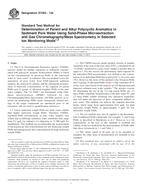
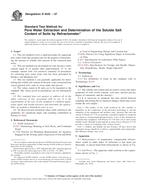 ASTM D4542-07
ASTM D4542-07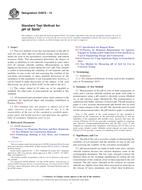 ASTM D4972-13
ASTM D4972-13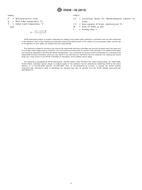 ASTM D5258-02(2013)..
ASTM D5258-02(2013)..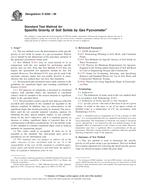 ASTM D5550-06
ASTM D5550-06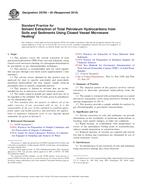 ASTM D5765-05(2010)..
ASTM D5765-05(2010)..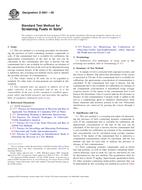 ASTM D5831-09
ASTM D5831-09
 Cookies
Cookies
